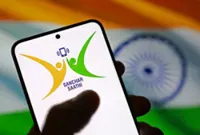Cellphones confiscated from students are stored in a specialised phone-safe at Timber Creek High School in Orlando, Florida. As the new school year starts, a wave of new laws that aim to curb distracted learning is taking effect in Indiana, Louisiana, and other states. — The New York Times
Cellphones have become a school scourge. More than 70% of high school teachers say student phone distraction is a “major problem”, according to a survey this year by Pew Research.
That’s why states are mounting a bipartisan effort to crack down on rampant student cellphone use. So far this year, at least eight states have passed laws, issued orders or adopted rules to curb phone use among students during school hours.





